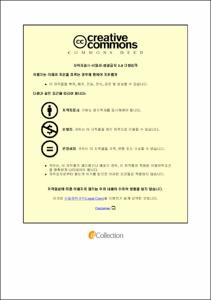해상운임 결정요인 및 운임 변동성 대응 정책 우선순위 도출 연구
- Abstract
- This study comprehensively reviewed previous domestic and overseas studies and confirmed the determinants of seaborne freight rates, which have been recognized as significant determinants of freight rates and were most frequently used as the determinants of freight rates in previous studies. After that, this study performed an econometrics analysis and identified determinants affecting seaborne freight rates. As a result of the analysis, the container and chemical carriers do not have autonomous coordination mechanisms to overcome the recession; dry cargo carriers do not have autonomous coordination mechanisms to overcome the boom or recession, requiring government policy intervention. If the seaborne freight rate is higher or lower than the freight rate at the time of long-term balance, the maximization of utility cannot be achieved, and if there is no autonomous coordination mechanism in the market, efficient allocation of resources through government policy intervention is required. In addition, this study attempted to present weights for each policy alternative for stabilizing seaborne freight rates by applying the AHP and derive policies that can be implemented more effectively for stabilizing freight rates. As a result of a comprehensive analysis of the ten detailed factors, the alternative bulk carriers’ shipbuilding assistance policy is 0.281, showing the highest importance among factors - subsequently, the scrap subsidy policy is 0.171 and the port fare reduction policy is 0.140. Overall, ship-related support policies such as shipbuilding and ship scraps recorded the highest importance, which is understood to be relatively greater than the cargo stabilization policy. In addition, as a result of the AHP response, the direct form of policy accompanying subsidy is more preferred than the indirect support form of policy. These results, which measured the high importance of policies in the form of subsidies, suggest that direct policies that can be expected to have an immediate effect on the shipping industry, which has been suffering from prolonged market deterioration, are much preferred by shipping companies.
- Issued Date
- 2022
- Awarded Date
- 2022. 2
- Type
- Dissertation
- Publisher
- 부경대학교
- Affiliation
- 부경대학교 대학원
- Department
- 대학원 과학기술정책학과
- Advisor
- 이민규
- Table Of Contents
- Ⅰ. 서론 1
1. 연구의 배경과 목적 1
가. 연구의 배경 1
나. 연구의 목적 2
2. 연구의 방법론 및 구성 3
가. 연구의 방법론 3
나. 연구의 구성 6
Ⅱ. 해상운임 개요 및 특성 8
1. 해상운임 개요 8
가. 컨테이너선 운임 8
나. 건화물선 운임 10
다. 유조선 운임 13
2. 해상운임 변동 및 변동원인 18
가. 해상운임 변동 18
나. 운임 변동 원인 19
Ⅲ. 이론적 배경과 선행연구 고찰 25
1. 해운업, 해운시장 및 해상운임 개념 25
가. 해운업의 개념 25
나. 해운시장의 개념 25
다. 해상운임의 개념 26
2. 해운업, 해운시장 및 해상운임 관련 문헌연구 고찰 27
가. 국내선행연구 27
나. 해외선행연구 39
3. Co-integration 모델, VECM 관련 문헌연구 고찰 42
4. AHP 관련 문헌연구 고찰 49
가. AHP 방법론 사용 선행연구 50
나. 회귀분석 + AHP 방법론 사용 선행연구 53
5. 소결 59
가. 선행연구 상의 해상운임 주요 결정요인 59
나. 선행연구와 본 연구의 차별성 61
Ⅳ. 해상운임 결정요인 회귀분석 결과 62
1. 데이터 소개 62
가. 데이터 선정 배경 62
나. 설명변수 64
다. 종속변수 73
2. 모형선정 배경 76
가. 공적분 모형 76
나. VECM 78
3. 회귀분석 결과 79
가. 컨테이너선 해상운임 결정요인 79
나. 건화물 운반선 해상운임 결정요인 84
다. 유조선 해상운임 결정요인 89
라. 화학제품 운반선 해상운임 결정요인 93
4. 소결 97
Ⅴ. 해상운임 안정화를 위한 정책방안 도출 102
1. 정책방안 도출 방법론(AHP 분석) 102
가. AHP 개요 102
나. AHP 목적 103
다. AHP 구조화 104
2. AHP 분석결과 110
가. 대요인 분석결과 110
나. 세부요인 분석결과 112
다. 그룹별 분석결과 116
라. 선종별 분석결과 119
3. 종합분석결과 124
가. 정책 우선순위 124
나. AHP 분석결과 해석 125
Ⅴ. 결론 및 시사점 129
1. 연구결과 요약 129
가. 계량 분석 결과 129
나. AHP 분석 결과 131
2. 정책적 시사점 132
가. 수급 조정 정책 수행 132
나. 시장 불완전성 해소 정책 수행 133
다. 직접 지원 형태 정책 수행 134
라. Fast Track 형태 정책 수행 135
3. 학술적 시사점 137
가. 경제학적 이론 틀을 활용한 불완전시장 규명 138
나. 구체적 정책제언을 통한 학계의 사회적 책임 완수 139
4. 연구의 한계점 및 향후 연구과제 140
- Degree
- Doctor
- Files in This Item:
-
-
Download
 해상운임 결정요인 및 운임 변동성 대응 정책 우선순위 도출 연구.pdf
기타 데이터 / 1.4 MB / Adobe PDF
해상운임 결정요인 및 운임 변동성 대응 정책 우선순위 도출 연구.pdf
기타 데이터 / 1.4 MB / Adobe PDF
-
Items in Repository are protected by copyright, with all rights reserved, unless otherwise indicated.